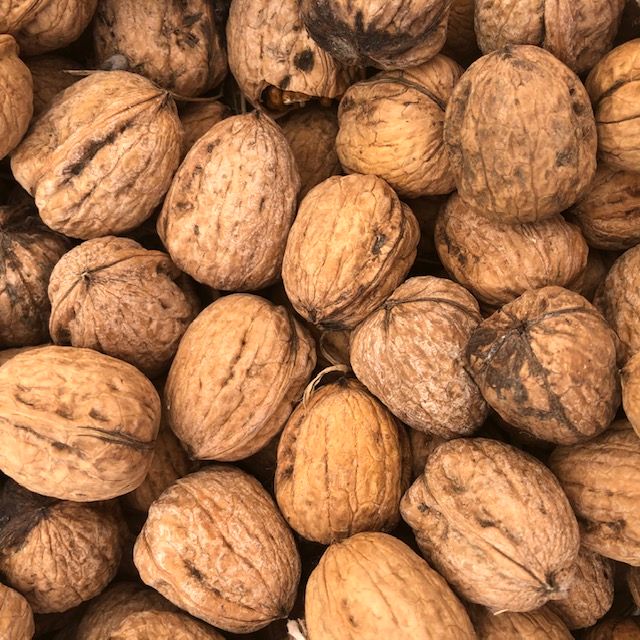Have you been out to the Chico orchards lately? If so, you may have noticed big trucks, lotsa dust, and bustling orchards. That’s because it’s walnut harvest season!
Walnuts are the oldest nut known to man, dating back as far as 10,000 BC. While they are great as just a snack, they are also excellent chopped, toasted, or glazed. They have a rich and satisfying flavor that lends itself just as easily into a savory dish or salad as it does into a sweet treat. In ancient times, walnuts were a symbol of the intellect, as the intricate shape of the nut resembles that of a brain. At that time, however, no one knew that walnuts were actually one of the healthiest natural brain foods in existence. Because of the high levels of omega-3 fatty acids in the walnut, studies prove that this nutrient-dense food can actually improve brain function, promoting fluidity in brain cell membranes and increasing their ability to transmit signals to one another. In addition to being a brain-healthy food, walnuts also contain higher levels of cancer-fighting antioxidants than any other edible nut.
Come down to the Chico Certified Farmer’s Market and stock up and this local, healthy, and tasty treat!
- walnuts3
- walnuts4
- walnuts2
Walnut Types
There are many different varieties of walnuts, but they all fall into three basic categories: English (or Persian), Black, and White (or Butternut). All three kinds of walnuts are a wealthy source of omega-3 essential fatty acids and antioxidants, and vary in physical attributes, region and taste.
English / Persian
As the most commonly consumed walnut in the United States, the English walnut is characterized by a thin, gnarled shell enclosing a smooth, ivory-colored nut. English walnuts have a mild taste and are often roasted for many recipes that require them.
Black
Less common than the English nut, black nuts are characterized by a thick, hard shell with sharp, jagged edges and a darker color. Contrary to the English nut’s milder flavor, black nuts are known for their pungent aroma and robust flavor, and can replace English nuts in many recipes.
White / Butternut
The white nut is the rarest variety of walnut and considered an endangered species by the the United States and Canadian governments. They have a sweet, oily flavor and are covered with a green, fuzzy husk and protected by a light-colored shell with jagged edges.
Bonus! Red Walnuts
Red Walnuts are not genetically modified. Instead, they were created using natural methods of grafting Persian red-skinned walnuts onto larger and creamier English walnuts. To retain their red color, they should be shelled by hand. Machine shelling causes the red layer to dull and chip. These nuts are larger in size and the shells are a little harder than other walnut varieties, while their trees grow slower. Since there are limited amounts of producing trees, these rare walnuts aren’t found very commonly, but you can usually find them at specialty stores or farmers’ markets!



